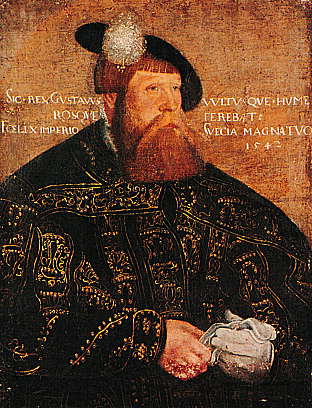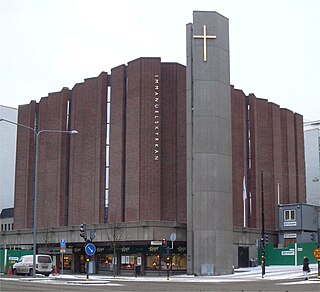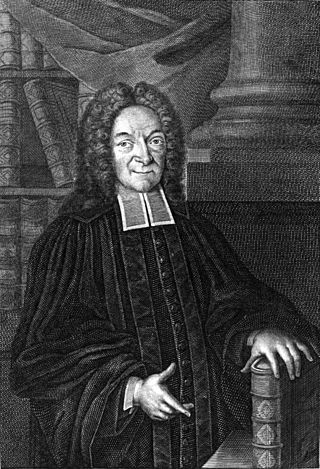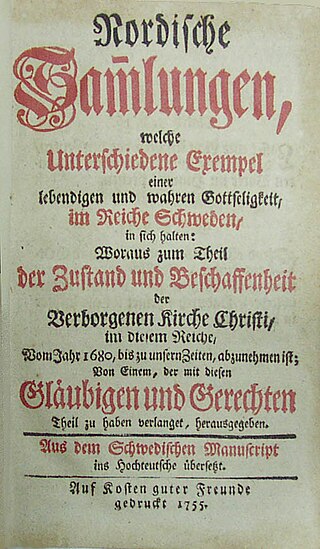
Gustav I, commonly known as Gustav Vasa, was King of Sweden from 1523 until his death in 1560, previously self-recognised Protector of the Realm (Riksföreståndare) from 1521, during the ongoing Swedish War of Liberation against King Christian II of Denmark, Norway and Sweden. Gustav rose to lead the Swedish War of Liberation following the Stockholm Bloodbath, where his father was executed. Gustav's election as king on 6 June 1523 and his triumphant entry into Stockholm eleven days later marked Sweden's final secession from the Kalmar Union.
Pietism, also known as Pietistic Lutheranism, is a movement within Lutheranism that combines its emphasis on biblical doctrine with an emphasis on individual piety and living a holy Christian life.

Converge, formerly the Baptist General Conference (BGC) and Converge Worldwide, is a Baptist Christian denomination in the United States. It is affiliated with the Baptist World Alliance and the National Association of Evangelicals. The headquarters are in Orlando, Florida. The current president of Converge is John K. Jenkins.

The Evangelical Covenant Church (ECC) is a Radical Pietistic denomination of evangelical Christianity. The denomination has 129,015 members in 878 congregations and an average worship attendance of 219,000 people in the United States and Canada with ministries on five continents. Of Lutheran Pietist roots and founded in 1885 in North America by Swedish immigrants, the church is now one of the most rapidly growing and multi-ethnic denominations on the continent.

High church Lutheranism is a movement that began in 20th-century Europe and emphasizes worship practices and doctrines that are similar to those found within Roman Catholicism, Eastern Orthodoxy and Anglo-Catholicism. In the more general usage of the term, it describes the general high church characteristics of Lutheranism in Nordic and Baltic countries such as Sweden, Finland, Estonia and Latvia. The mentioned countries, once a part of the Swedish Empire, have more markedly preserved Catholic traditions.

The Mission Covenant Church of Sweden, founded in 1878, was a Swedish evangelical free church in the Radical Pietist tradition. It was the second-largest Protestant denomination in Sweden, after the national church, the Church of Sweden. In 2011, the Mission Covenant Church of Sweden completed a merger with two other denominations, resulting in the new denomination Uniting Church in Sweden. The denomination was a member of the Swedish Free Church Council, the International Federation of Free Evangelical Churches, and the World Communion of Reformed Churches.

Valentin Ernst Löscher was a German orthodox Lutheran theologian.

Thomas Leopold was one of the prophets and martyrs of the Swedish Pietist movement during the 18th century.

Lars Ulstadius, was a Finnish Pietist, who personified the first appearance of Radical Pietism in Finland.

Radical Pietism are those Christian churches who decided to break with denominational Lutheranism in order to emphasize certain teachings regarding holy living. Radical Pietists contrast with Church Pietists, who chose to remain within their Lutheran denominational settings. Radical Pietists distinguish between true and false Christianity and hold that the latter is represented by established churches. They separated from established churches to form their own Christian denominations.

Sven Rosén (1708–1750) was a Radical-Pietistic writer and leader.

During the Reformation, the territories ruled by the Danish-based House of Oldenburg converted from Catholicism to Lutheranism. After the break-up of the Kalmar Union in 1521/1523, these realms included the kingdoms of Denmark and Norway and the Duchies of Schleswig and Holstein, whereby Denmark also extended over today's Gotland and Øsel in Estonia.

Fredrik Gabriel Hedberg was a Finnish Lutheran pastor and vicar. He was a Neo-Lutheran theologian, a prominent figure in the Finnish evangelical revival movement and a leader of confessional Lutheranism in Finland.
Gråkoltarna was a religious mystic-apocalyptic sect within Radical Pietism, active in Stockholm in Sweden in the 1730s.

Carl Gustaf von Essen was a Finnish Pietistic priest.
Peter Spaak was a Swedish Protestant Reformer.

Gustaf Palmquist, also Palmqvist, was a pioneer Swedish Baptist pastor and missionary in Sweden and the United States. He was one of three brothers, including Johannes and Per Palmqvist who were active early in the Baptist movement in Sweden.

Läsare or the Reader movement was a Swedish Pietistic Christian revival movement of people who stressed the importance of reading, that is, reading the Bible and other Christian literature. It was influenced by both the Herrnhuters and the Methodists and has been described by scholar George M. Stephenson as a "second religious reformation in Sweden".

The Conventicle Act was a decree issued 13 January 1741 by King Christian VI of Denmark and Norway and forbade lay preachers from holding religious services – conventicles – without the approval of the local Lutheran priest. The law was repealed in 1839 in Denmark and 1842 in Norway, which lay the groundwork for freedom of assembly.
The Mission Friends was an interdenominational Christian, mostly Pietist and Radical Pietist association in Sweden and among Swedish Americans in the United States, that eventually had an impact on several Protestant denominations and their missionary societies today, even outside of Lutheranism, the Swedish community, and the United States, eventually influencing other communities and forming new independent Radical Pietist, Baptist – especially Swedish Baptist – and later on Pentecostal and Charismatic free church denominations.



















